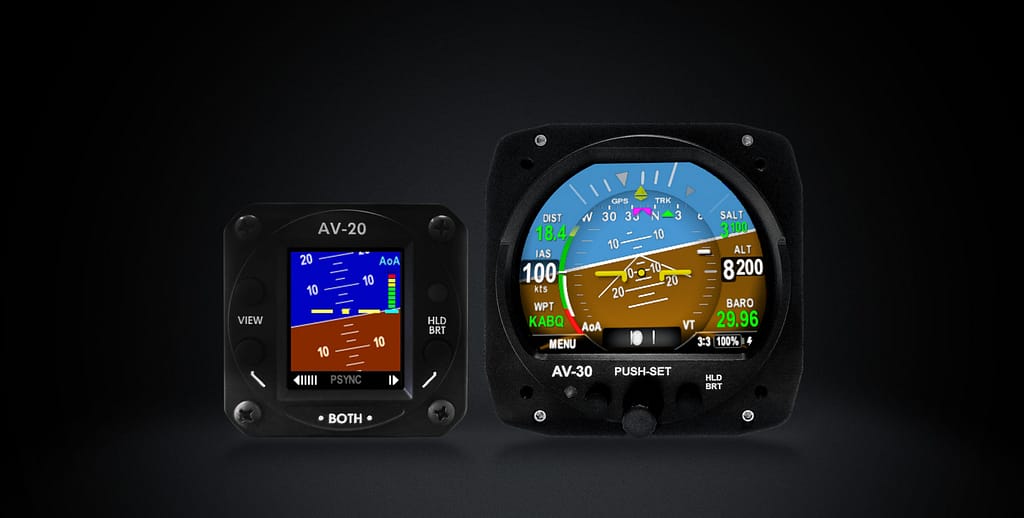
By now, you’ve hopefully heard the news that uAvionix completed the acquisition of AeroVonics’ fantastic cockpit display technology this week. We’ve hardly been able to contain our excitement in sharing this news with you. It is a milestone event in the growth of our company, and I wanted to take the opportunity to enumerate why. If you observe all that we do as a company, you might note that venturing into cockpit displays doesn’t seem to fit our MO. If you’ve read our press releases, they almost always begin with:
“uAvionix, designer and manufacturer of Communications, Navigation, and Surveillance (CNS) equipment for manned and unmanned aircraft…”
And they always end with an “About uAvionix” section which contains the following statement:
“uAvionix was founded in 2015 with the mission of bringing safety solutions to the unmanned aviation industry in order to aid in the integration of Unmanned Aircraft Systems (UAS) into the National Airspace System (NAS).“
So, with that in mind, we up and buy a General Aviation (GA) cockpit display! Have we given up on UAS? Is this some sort of massive pivot in strategy? Have we lost our way, our minds? [Spoiler Alert] No. But before I elaborate on that, let’s take a moment to celebrate what this does mean for our GA offerings, because if you actually read those “About uAvionix” portions of our press releases, you’ll learn that we’re pilots too – and we think the AeroVonics displays are just so cool!
So, why did we do it? Let’s count the reasons…
- uAvionix in the cockpit!! So far, every product we produce for GA is a remote mount unit (echoUAT) or installs on the outside of the aircraft (skyBeacon and tailBeacon). We’ve wanted to be front and center in your cockpit for a while, but we wanted to do it right. We all fly aircraft that can benefit from safety and reliability updates, but these updates need to be performed affordably and with minimal disruption. The AV-30 is innovative and downright beautiful, and looks right at home in your 6-pack. The 3” round (round!) display lets you keep your vintage, analogue look while modernizing to digital precision. You no longer need to consider going full glass at the cost that entails, or cutting in a big square hole in order to modernize your panel.
- Certified and certifiable! We’ve learned through our Beacons the value of certification. The AV-20-S is certified under the Non Required Safety Enhancing Equipment (NORSEE) standard for installation in certified aircraft, and the AV-30 is in the Supplemental Type Certificate (STC) process as we speak. Jeff Bethel, the founder of AeroVonics also co-founder of Aspen Avionics, led project engineering at Bendix King, and was an avionics engineer at Eclipse Aviation, Trimble Navigation, and UPS Aviation Technologies. His entire career of understanding how to develop certified avionics has gone into the AeroVonics products.
- Installation network. The AV-20-S and AV-30 are perfect for our Qualified Installer (QI) network, now over 700 strong across the U.S. Our QIs will soon have access to training on installation and configuration of these products, which – while not as simple as a tailBeacon installation, will be possible in several hours. And best of all, they can come to you, rather than you trying to book time in an avionics shop.
- Product Roadmap. There is already so much functionality in the AV-30 (attitude indicator, altitude, airspeed, AoA, G-meter, bus voltage, directional gyro, and more) you might think we couldn’t possibly squeeze any more in. Oh, but you would be wrong, we have plans that range from autopilot integration, transponder control, and a Cockpit Display Traffic Indicator (CDTI) to give you visual and aural ADS-B traffic alerts.
- GA is important! As pilots, we are passionate about what we do in each of our markets, but for many of us, GA is “home.” With this acquisition, we are letting the world know that the Beacons aren’t just one-offs on the way to an unmanned future. We’re in GA, and we’re here to stay.
Great stuff, so be sure to take a look at the product features, and check out the great press product reviews posted over the past year.
So, here’s where I try to come full circle and explain what this means for our unmanned strategy. You see, the AV-20-S and AV-30 aren’t simply displays echoing all of its inputs from a sensor suite somewhere else on the plane. In fact, the AV-30 without the display screen is fully self-contained and to-be-certified Air Data Attitude and Heading Reference System (ADAHRS). THAT is something we think is going to be a key component of large and medium to high altitude UAS and Urban Air Mobility (UAM) systems in the future, not to mention the displays on the Ground Control Stations (GCS) for such systems.
So, there you have it. Why did we do it? For all of these reasons. We can’t wait to start bringing this tech to a cockpit near you! We would love to hear from you, so send us your thoughts at squawk@uavionix.com!

